Palm trees are one of the most popular houseplants because of their low-maintenance and great aesthetic appeal.
They thrive in tropical and sub-tropical regions of the world where they can get warm and bright sunlight. That’s why palm tree owners living in colder climates need to take special care of them.
Most tropical palms are sensitive to cold. They can easily get damaged if the surrounding temperature is before 45 degrees Fahrenheit.
Additionally, a palm tree can even die if the temperature goes below 32 degrees Fahrenheit.
In This Article – We’ll explain what’s the ideal temperature for palm trees, along with some useful tips to keep palm trees healthy in cold temperatures. We’ll also discuss some palm tree species that can survive freezing temperatures.
What’s the Ideal Temperature for Palm Trees
As mentioned, palm trees thrive under warm conditions.
The ideal temperature for most palm trees ranges from 60 to 80 degrees Fahrenheit.
Cold weather with a temperature lower than 45 degrees Fahrenheit can hamper the plant’s root activity and growth rate.
Factors Affecting the Palm Tree’s Cold Tolerance

The following are some factors that can affect the cold tolerance of a palm tree.
Health
The better the plant’s health the higher its cold tolerance will be.
If your palm tree receives water and nutrients in ideal amounts, it’ll be healthier and will withstand cold better.
Maturity
Mature palm trees perform better in cold weather as compared to young and fragile plants.
That’s because they have a more extensive root system and thick trucks.
Acclimatization
A palm tree that was raised in a greenhouse will need some time to acclimatize to a colder climate.
Not only does acclimatization include low temperatures but also some other variables such as high winds, less sunshine, and low moisture availability.
You’ll need to provide such a palm tree with some sort of protection until it’s acclimatized fully to a new environment.
Microclimate
The microclimate refers to a small area around your plant. It has a different temperature as compared to the climate of your region.
You can increase the temperature of the microclimate using different materials such as rocks and fences.
Additionally – You can also plant your palm tree under a big tree to protect it from the harshness of winter.
Tips for Keeping Palm Trees Healthy in Cold Temperatures

The following tips will help you keep your plants healthy in cold temperatures and prevent the problem of a cold-damaged palm.
Use a Frost Protection Spray
Using a frost protection spray is one of the most popular and effective ways to keep palm trees alive during winters.
These sprays will winterize your plants and allow them to stay green and shiny during cold weather.
They’ll also protect the leaves of the plant from freeze-related burns that can occur due to snow and icy winds.
Wrap Palm Trees
Wrapping your palm trees temporarily is a great way to protect them from cold winter winds and storms.
If you hear in weather reports that the temperature is about to fall below 32 degrees Fahrenheit, consider wrapping your palm trees using frost cloth or burlap.
If you have small plants, consider covering them with boxes by leaving them slightly ajar.
Make sure that you remove the wrapping and boxes once the temperature reaches 40 to 45 degrees Fahrenheit.
Heads Up! You must not leave your palm trees wrapped or covered for more than five days as it’ll suffocate them.
Perform Mulching
Mulching is beneficial for palm trees but it helps them a lot during winters.
Not only does it keep the palm trees from falling victim to leaf damage but it can also prevent ground freezing.
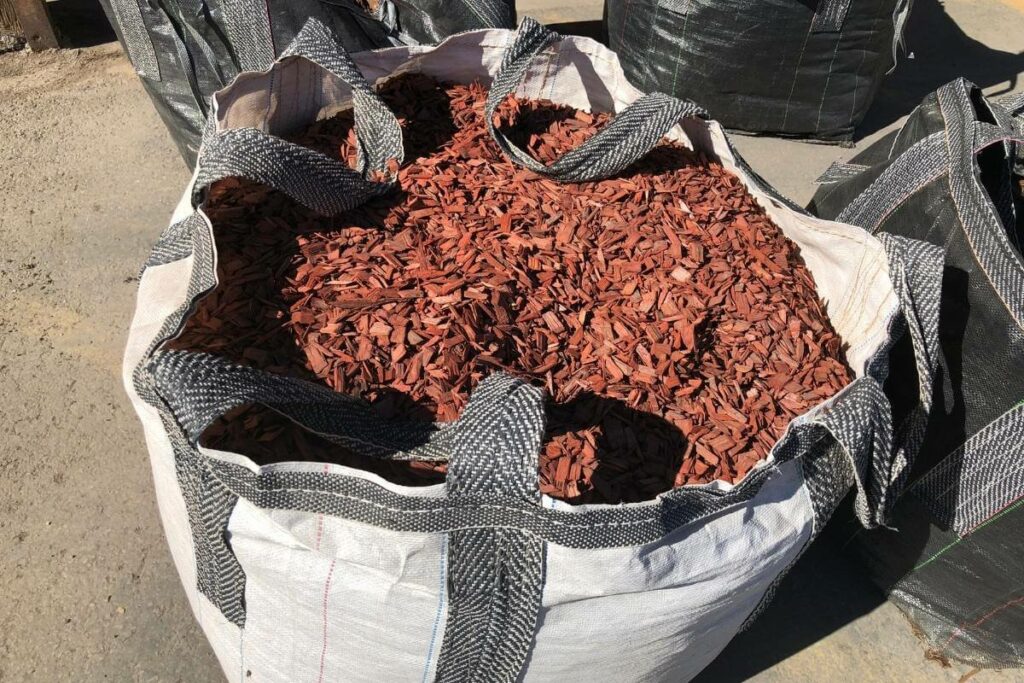
Make sure that you use organic mulch, such as maple or oak leaves, for winterizing your palm trees.
Water Palm Trees
Palms that are entirely soaked with water are more resistant to winter frost.
The water intake of these plants decreases significantly during cold months, and it can result in defoliation.
Therefore, you should increase the frequency of watering your palm trees during winters. You can also use lukewarm water to improve the water uptake of the plant.
Use Heating Cables or Christmas Lights
You can easily buy low-wattage heating cables from your local hardware store to keep your palm trees warm.
These cables are installed in the soil to keep it warm and transfer that heat to plants.
They also come with a built-in thermostat and you can program it so that it automatically turns on if the temperature is lower than 45 degrees Fahrenheit.
Works Well – If you can’t find heating cables, you can also use Christmas lights for the same purpose. They’ll also create heat to keep your plants warm and healthy during winter.
You need to install these lights on the trunk of your palm trees.
Buy Temporary Greenhouse
Buying a temporary greenhouse is another effective solution to protect your palm trees during cold months.
While it’s an expensive and time-consuming solution, it’s fool-proof and generates the best results.
Move Palm Trees Inside
If you have planted your palm trees in pots and they’re portable, consider bringing them indoors.
It’s the easiest solution to keep your plants alive and healthy during harsh winters.
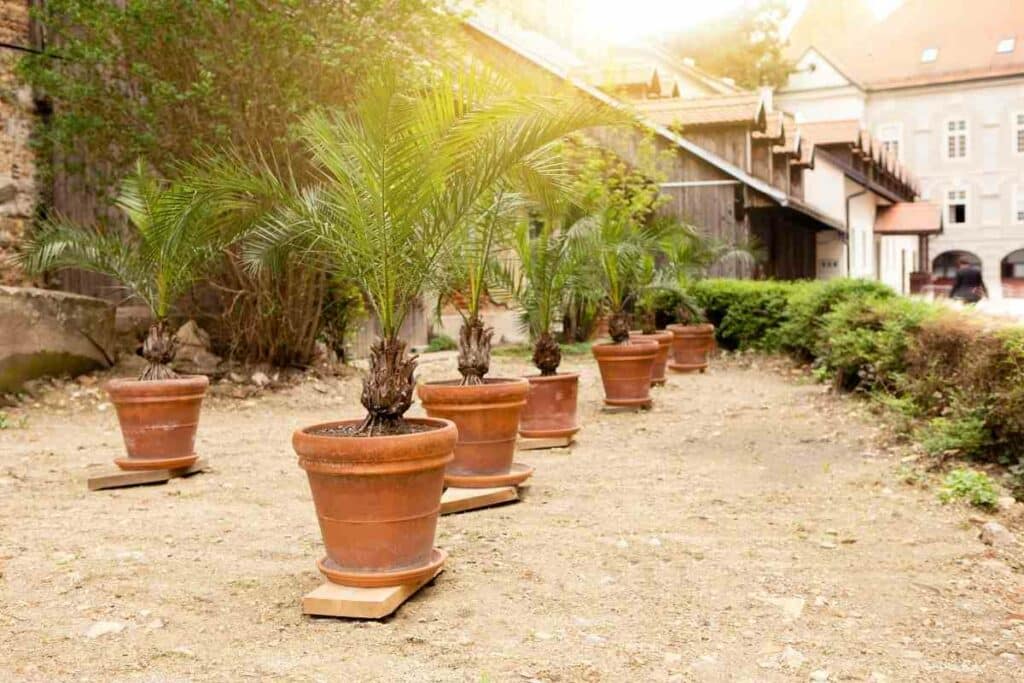
You might need to install a humidifier indoors to increase the moisture content of the hair to keep your palm trees healthy.
Use a Fertilizer
It is important to apply fertilizer to protect your palm tree during winter.
This can increase the plant’s overall cold-hardiness and cold tolerance and allow the palm trees to withstand the harsh elements that come with the temperature drop.
Remember This – Make sure that you read the manufacturer’s recommendations carefully to use the fertilizer in the correct amount.
Best Palm Trees for Winter
While most palm trees get damaged in temperatures lower than 45 degrees Fahrenheit, there are some cold hardy palm trees that can easily withstand 20 degrees Fahrenheit or even colder temperatures.
The following is the list of some cold tolerant palms that you can use if you live in an area with a cold climate.
Chinese Fan Palm Tree
The Chinese Fan palm tree, also known as Livistona Chinensis, is one of the best cold hardy palms, native to China and Japan.
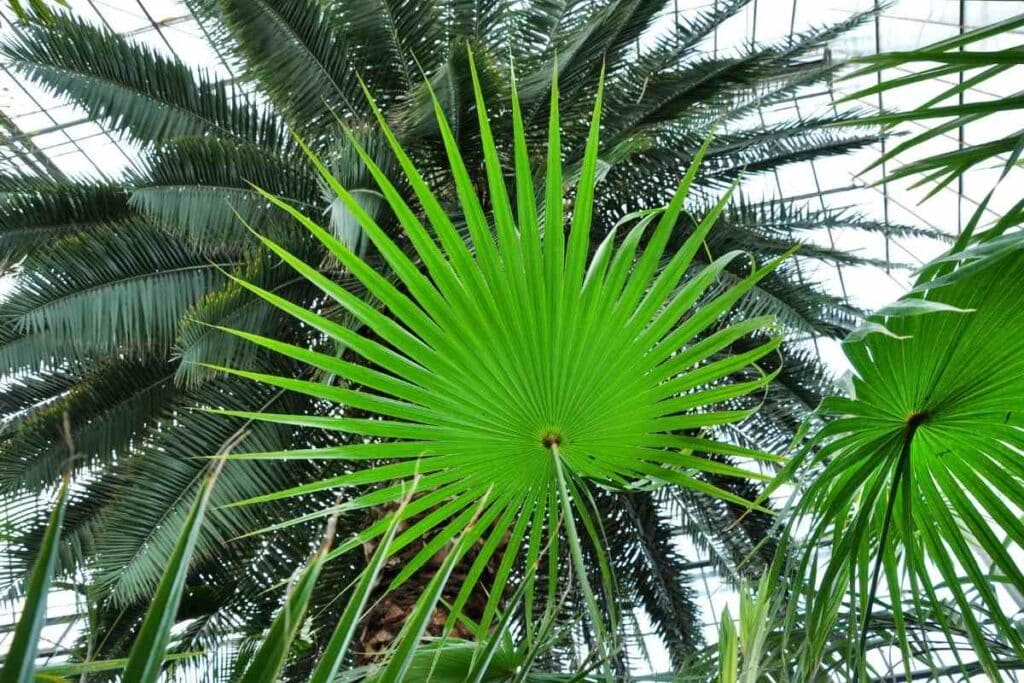
Not only can it withstand cold temperatures ranging from 20 to 25 degrees Fahrenheit but it can also tolerate drought.
It thrives in 9a – 11 USDA zones but can survive 6 and 7 zones as well with some loss of the foliage.
It’s important to note that the Chinese fan palm trees are usually killed to the ground in winters but they automatically grow back as the warm weather comes.
European Fan Palm Tree
The European Fan Palm Tree, also known as Chamaerops Humilis, is a slow-growing plant.
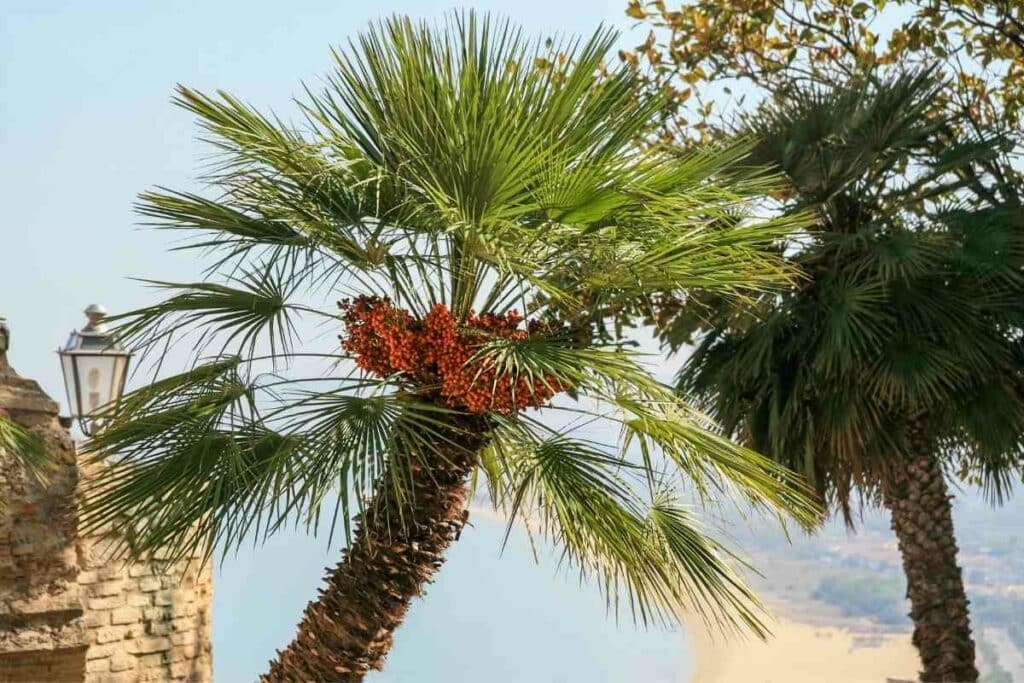
It’s an evergreen, bushy, and attractive palm, native to Mediterranean and Northern African regions.
It can easily withstand cold temperatures down to 5 to 10 degrees Fahrenheit and can thrive in 7b – 11 USDA zones.
Additionally – The plant can survive 3 degrees Fahrenheit of temperature but you might notice some leaf damage.
Windmill Palm Tree
The Windmill Palm Tree, also known as Trachycarpus Fortunei, is another cold tolerant palm, native to Southern China, Nepal, Thailand, Burma, and India.
It’s naturally found in mountainous regions that are above 6650 feet above sea level, making it tolerant to freezing temperatures.
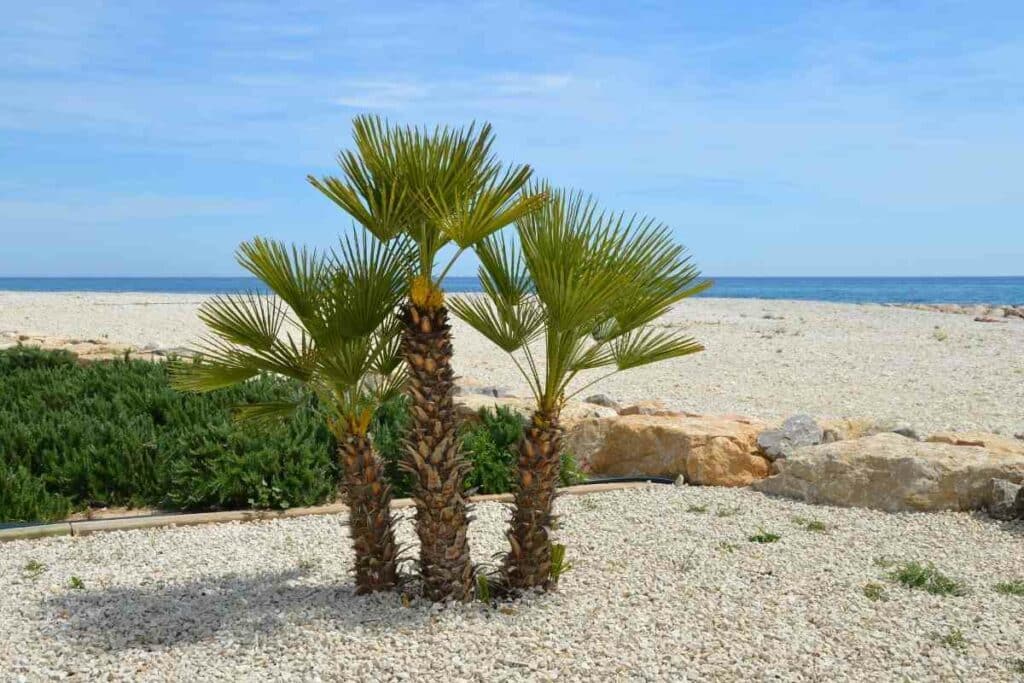
It can withstand cold down to 5 to 10 degrees Fahrenheit easily and it thrives in 7b – 11 USDA zones.
It’s important to note that young Windmill palm trees are more sensitive to cold temperatures.
They can lose all their foliage and get damaged permanently if temperatures drop to 15 degrees Fahrenheit.
Cabbage Palm Tree
The Cabbage Palm Tree, also called Sabal Palmetto, is native to North America and Mexico.
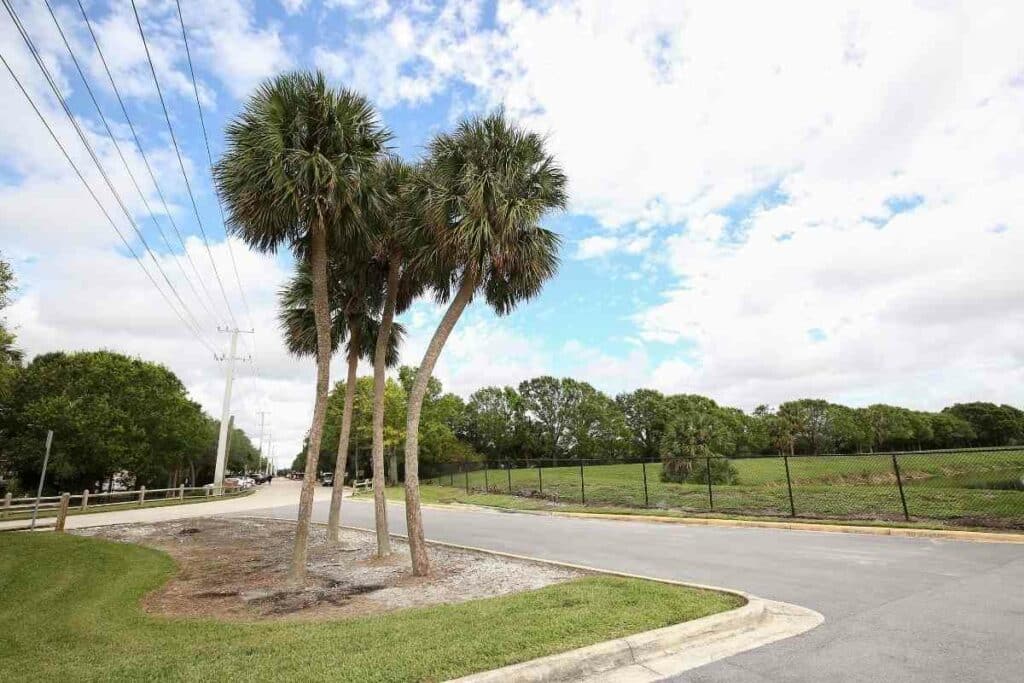
It’s a durable plant that can tolerate cold temperatures and drought. It can easily survive cold down to 10 to 15 degrees Fahrenheit and thrive in 8a – 11 USDA zones.
While any temperature lower than 10 degrees Fahrenheit can cause palm trunk and leaf damage, the plant can survive 0 degrees Fahrenheit of temperature without dying.
Sago Palm Tree
The Sago Palm Tree, also called Cycas Revoluta, is basically a cycad, native to Southern Japan.
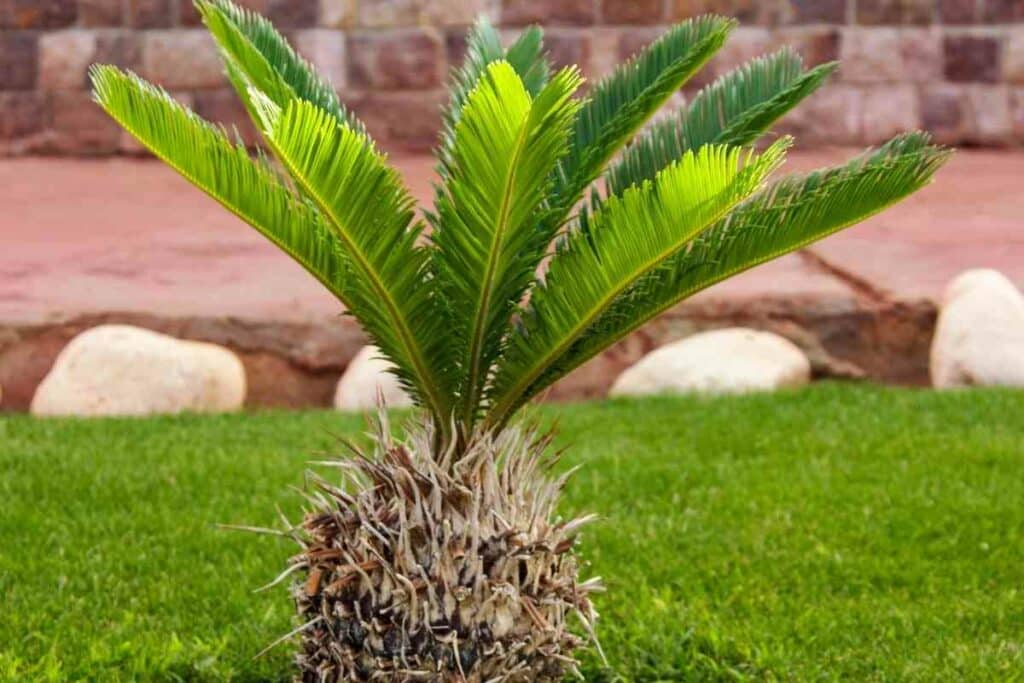
It’s a cold hardy palm that can tolerate temperatures down to 15 degrees Fahrenheit and thrives in 8b – 11 USDA zones.
In Some Places – This palm tree can also survive 10 degrees Fahrenheit of temperature without showing any signs of damage.
Bismarck Palm Tree
The Bismarck Palm Tree, also known as Bismarckia Nobilis, is one of the most attractive palm trees.
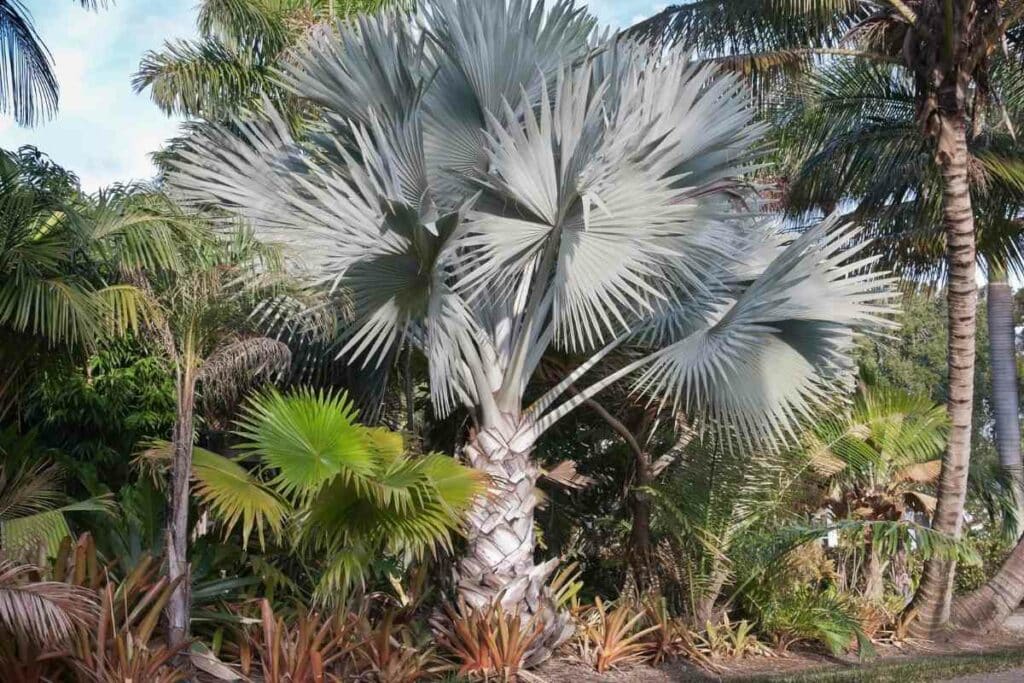
It’s native to Madagascar and can easily tolerate cold temperatures as low as 25 degrees Fahrenheit.
This palm tree is perfect for USDA zones 9b – 11 and you can plant it in areas with high winds because of its extensive root system.
Final Words
Palm trees are attractive and low-maintenance plants that also have a self-cleaning nature.
While most of them can’t tolerate extremely cold temperatures, there are cold hardy palms that can survive winter easily.
But if you don’t have any of these species, consider using the tips listed in this guide to protect your plants from cold weather.
